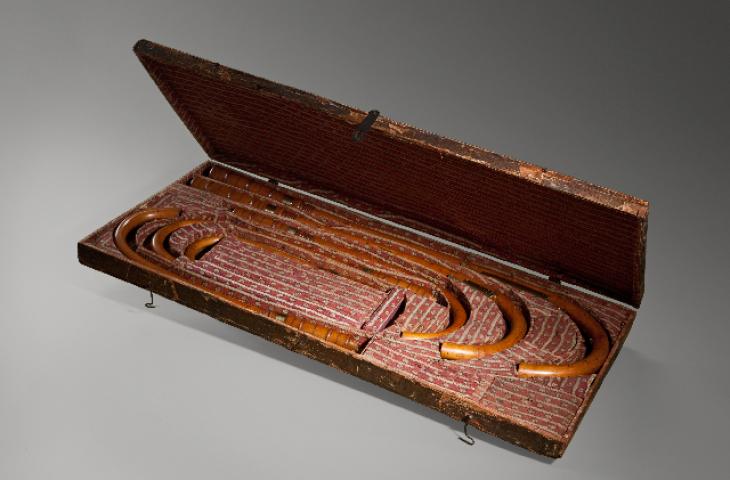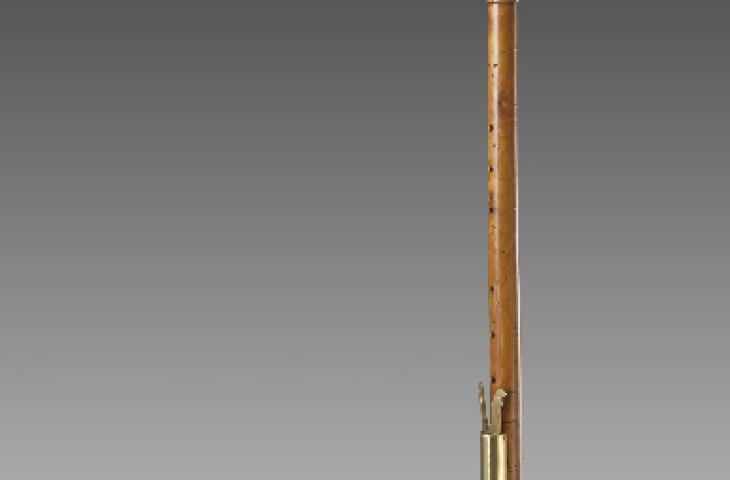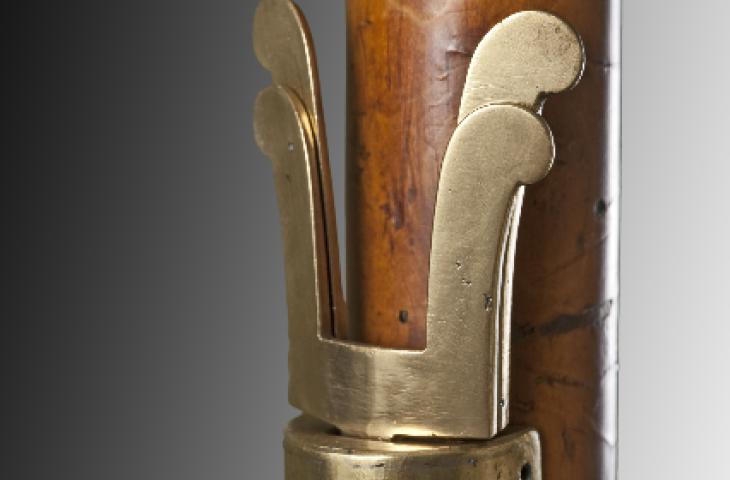Set of crumhorns

Set of crumhorns, Bassano?, Italy?, second half of the 16th century? inv. 0610-11-12-13-14-15
Set of crumhorns

Set of crumhorns, ?, second half of the 16th century, inv. 0610-11-12-13-14-15
Set of crumhorns

Set of crumhorns, ?, second half of the 16th century, inv. 0610-11-12-13-14-15
The crumhorn is a double-reed instrument whose origins lie in the Late Middle Ages. It takes its name from the curve of its tube. The double reed is protected by a wind cap with an opening through which the instrument is sounded by blowing. The fact that the reed is not placed directly in the mouth makes the instrument easy to play. There are seven finger-holes and a thumb-hole. In the bass instruments, the lowest hole is stopped by a key. The tone range is limited to a ninth.
During the Renaissance, crumhorns were highly popular at Court and among town musicians. They were played in a consort of, for example, treble, alto, tenor, bass and great bass. In his Syntagma Musicum of 1619, Michael Praetorius listed five different sizes of crumhorn. This set of six in their original case is unique and was probably made in the second half of the sixteenth century by a member of the Italian, Bassano family.